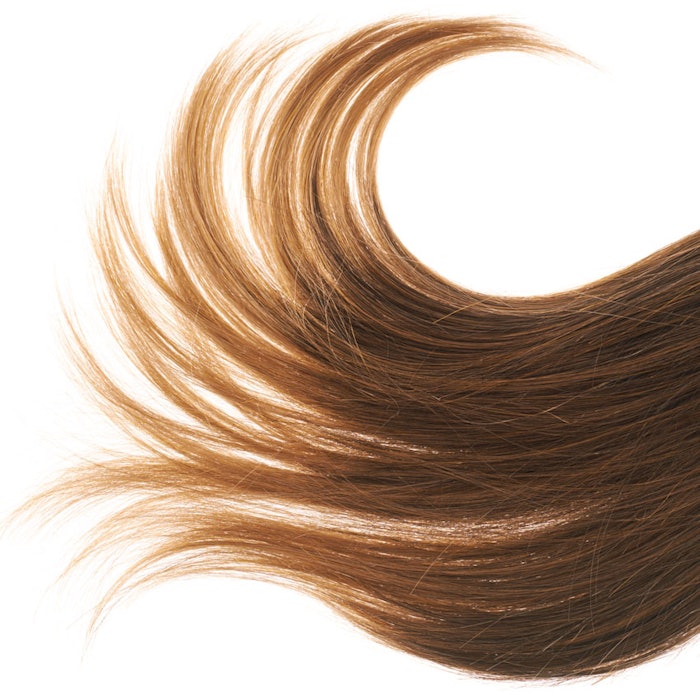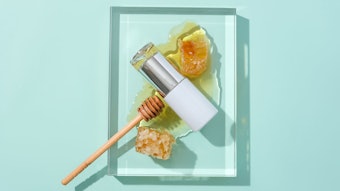
The previous article in this series1 shifted focus from efforts to alter the surface properties of hair and onto the ability to manipulate the internal structure (the cortex). Many sensorial and manageability-related attributes relate to the ability for conventional daily-use products to deposit materials on the hair surface—and the benefits of these treatments are undeniable.
At the same time, other attributes associate with the internal structure, and any product efficacy necessitates penetration and diffusion of ingredients into this inner sanctum. The relatively large molecules of daily-use products—surfactants and polymers and oils—seemingly preclude any appreciable access and suggest that alternate strategies are necessary to impact these areas.
Products intended to manipulate this internal structure have traditionally involved so-called chemical treatments—where small, reactive molecules engage in interactions with the hair protein. A side-effect of these treatments involves some compromise in fiber structural integrity that frequently manifests in the all-encompassing consumer term, “damage.”
What if there was the ability to manipulate and alter the internal properties of hair by nonreactive means? While the initial instinct may be to dismiss this pie-in-the-sky notion, there is everyday precedent in the interaction of water and hair.
It is difficult to conceive of any molecule that influences the properties of hair more than water. Most notably, exposure to water produces dramatic influence on hair’s mechanical properties. An understanding of how this seemingly innocuous molecule produces such effects may therefore point to approaches for creating longer lasting influences. Similarly, an ability to manipulate hair’s water content would theoretically provide an alternate means of fine-tuning properties.
From a technical measurement standpoint, scientific evidence suggests that nonreactive materials have the ability to penetrate and manipulate the properties of hair.
Water: a Not-so Innocuous Molecule
Water possesses many interesting properties; in this instance, the two most important are its small size and polar nature. Together, these
characteristics enable both ready penetration and the ability to solvate secondary strength-supporting electrostatic bonds within the protein structure.
Hair’s protein structure is cross-linked by both permanent, covalent cystine disulfide bonds and temporary electrostatic bonds that can occur between opposite-charged functional groups. With increasing water content, the contribution of hydrogen bonding is reduced, which subsequently lowers fibers’ mechanical properties. This process is often termed plasticization.
Hair’s water content is overwhelmingly controlled by the relative humidly (RH) of the surrounding environment and, therefore, mechanical properties also track with climatic conditions.2 Figure 1 shows the Young’s modulus of hair,3 which is often equated with hair “stiffness” as a function of RH. This is a completely reversible process, with the modulus constantly changing as hair re-equilibrates under different climatic conditions.
As an implication of this occurrence, other small, hydrogen-bonding molecules should be expected to induce a similar—albeit lesser—effect. Glycerol is one commonly used cosmetic ingredient that produces this effect. The plasticizing effect of closely related glycolic acid has also been documented for hair.4
To Plasticize or Not, That is the Question
Chemical damage produces an increase in the dry state modulus of hair at low and medium relative humidity. This is a reproducible yet puzzling occurrence, as reduction in the number of covalent bonds would be expected to lower mechanical properties. Nonetheless, it is a reproducible and recognized occurrence among those who regularly perform such testing.
Fibers become technically stiffer, which may be a contributor to overall diminished tactile properties and damage of the exterior cuticle. The ability to reverse this occurrence via plasticization with non-volatile ingredients may then be desirable.
On the other hand, plasticization lowers many other mechanical properties—most notably the amount of force required to induce fiber breakage. This occurrence is readily observable using conventional stress-strain testing, while being more dramatic when performing fatiguing experiments.5, 6 Accordingly, a strong argument can be made for de-plasticization being a more-desirable endpoint.
Figure 1 highlights a strategy by which this occurrence may be induced. The ability to reduce hair’s water content would increase mechanical properties. This may seem an unusual proposition in an environment where “hydration” and “moisturization” are central in consumers’ minds, but the disconnect between “consumer language” and scientific knowledge is becoming well-recognized.2, 7
The ability to lower the water content in hair and wool using species such as carboxylic acids8 and phenols9 was noted in the early 1960s. Our ongoing research builds on these ideas.
Figure 2 shows adsorption and desorption isotherms for hair that was soaked for 1 hour at 40oC in 5% chloro-resorcinol. The experiments, using gravimetric Dynamic Vapor Sorption (DVS) methodology,2 demonstrate an approximate 40% reduction in water content relative to the untreated control.
A general consensus in the scientific literature is that the activity of these molecules resides with the ability to block adsorption sites where water would otherwise attach. We have observed how this effect can be reversed by simple dialysis, which is in-line with this hypothesis and suggests that no chemical reactions are involved.
A Biological Chromatography Column
Given the ease with which water penetrates into hair it could be presumed that dissolved species would also be carried along for the ride, but this does not seem entirely straightforward. Figure 3 shows how soaking hair in a 5% citric acid solution can result in an approximate 20% reduction in water content, but this level of efficacy requires soaking for around one hour at 40oC; and for upward of four hours at 22oC.
These results—and comparable findings for other similar molecules—suggest that solute penetration requires some time. For conceptualization, we suggest that hair behaves in a manner comparable to the column in a liquid chromatography experiment—where the solvent readily traverses, while dissolved species move at differing rates depending on factors such as size and interaction with the column material. For incursion into the hair bulk, water-soluble materials must permeate through a protein structure, which presents a variety of options for interactions with the solute material.
Penetration of Non-aqueous Materials
The gravimetric DVS adsorption equipment can also be operated in a mode that allows similar experiments to be performed using other volatile species. Figure 4 illustrates absorption rates for water, methanol and ethanol in hair upon stepping the relative vapor pressure from 0% to 10%. Despite also being very small molecules that are capable of undergoing hydrogen bonding, these two solvents still diffuse into hair much slower than water.
These results emphasize how incursion into hair is not trivial; we are forced to re-think the likelihood of bigger molecules having appreciable penetration. For example, perhaps the earliest known hair care treatment involved the application of oils. There appears to be a long-standing presumption that benefits of such treatments extend beyond simple surface coating. However, trigycerides and other materials that typically comprise such oils are somewhat sizable.
We have used the Organics DVS approach to explore adsorption of some volatile oils in hair. These experiments began with model oils—e.g. decane—before moving onto more cosmetically applicable ingredients. Figure 5 shows results for the adsorption of cyclomethicone in hair.
DVS tracks adsorption by increasing sample weight, but such an effect may arise due to surface or bulk adsorption. These experiments begin with a rapid (although relatively small) increase in weight, which we ascribe to surface adsorption. Experimental curves then show a much slower (and still-smaller) increase in weight, which we believe to be bulk adsorption. Removing the volatile species from the surrounding atmosphere seemingly reverses this process, wherein surface adsorption is quickly lost while bulk oil slowly diffuses from the hair.
These studies have been extended to investigate the adsorption of fragrance oil components with similarly-shaped graphs being obtained. There appears to be evidence of oils penetrating beyond the hair surface, albeit at a very slow rate.
Slow May Be Good
The penetration of any material into hair would seem to perturb the internal structure, which would be expected to manifest in terms of fiber plasticization. This may improve hair feel by alleviating sensorial negatives, but hair can also become weaker and more prone to breakage.
In mechanical testing of hair, the tensile strength of individual fibers is dictated by the internal cortical structure with virtually no contribution from the outer cuticle. Yet, the cuticle is believed to have a considerably greater contribution to the bending and twisting properties of hair. Therefore, in theory, slow penetration of plasticizing ingredients may limit permeation to the outer structure, where bending and twisting may be enhanced with no compromise in tensile properties.
The twisting stiffness of hair (i.e. the torsional modulus) can be measured using a torsion pendulum.10, 11 Experiments involve allowing individual hair fibers to twist and untwist in a controlled manner, wherein mechanical parameters can be evaluated from consideration of the periodicity and amplitude of twisting.
Our group performed such experiments on hair that had been soaked in pure argan oil for a prolonged period of time at somewhat elevated temperature, and in accordance with our hypothesis, results suggested a reduction in torsional modulus with no effect on the extensional equivalent.
Further experimentation is required to better approximate consumer-relevant treatment procedures, but again there appears to be evidence for these materials penetrating beyond the outer hair surface.
Summary
It is remarkable that we understand so little about the ability of materials to penetrate into hair. It is common to hear presumptions and conjecture that all manner of ingredients readily penetrate to produce a variety of benefits, yet the lab results demonstrate how even small molecules appear to ingress rather slowly.
This lack of knowledge relates, in large part, to the absence of straightforward analysis techniques. Visualization approaches are most desirable, but they generally involve meticulous and complex sample preparation in terms of sectioning or possibly staining the hair.
Our results represent secondary measures where changes in the hair properties are considered a proxy for infiltration. Conventional hair science dictates that mechanical and water adsorption properties relate to the internal structure, so changes in these properties are evidence of internal manipulation.
Results indicate that mechanical properties of hair can be manipulated by non-reactive means, although there may be debate about which direction is most desirable. Yet results also constantly suggest that penetration of such ingredients tend to be rather slow, and so these materials are unlikely to be effective as drop-ins for conventional shampoo and conditioner treatments.
An ideal product form would seem to be once-popular hot oil treatments, which were thickened and colored water-based formulations. These treatments typically involved heating up a small tube of the product in a cup of hot water before applying and leaving on the hair for prolonged duration. Accordingly, both heat and time provide the potential for improved diffusion.
Of course, this adds a new step to a product usage regimen. Yet consumers constantly demonstrate their willingness to engage in far-more drastic practices to attain their desired hair care goals.
References
- TA Evans, Modifying hair’s structure from the Inside, Cosm & Toil 131(1) 36-41 (Mar 2016)
- TA Evans, Measuring the water content of hair, Cosm & Toil 129(2) 64-69 (Mar 2014)
- TA Evans, Measuring hair strength, part 1: Stress-strain curves, Cosm & Toil 128(8) 590-594 (Aug 2013)
- TA Evans, JM Altland, R Burch and J Horsager, Glycolic acid, no longer just for skin–Changing the internal properties of hair, Cosm & Toil 128(11) 816-820 (Nov 2013)
- TA Evans, Measuring hair strength, Part 2: Fiber breakage, Cosm & Toil 128(12) 854-859 (Dec 2013)
- TA Evans, Fatigue testing of hair– A statistical approach to hair jreakage, J Cos Sci 60 599-616 (2009)
- TA Evans, Consumer vs. scientific language: Relating in vivo to in vitro, Cosm & Toil 128(5) 300-304 (May 2013)
- CH Nicholls and JB Speakman, The adsorption of water by wool. Part IV–The influence of combined acid on the affinity of wool for water, J Tex Inst 45 T267-271 (1954)
- MM Breuer, Binding of phenols by hair I-III, J Phys Chem 68 2067-2073 (1964)
- LJ Wolfram and L Albrecht, Torsional behavior of human hair, J Cos Sci 36 87-99 (1985)
- D Persaud and Y Kamath, Torsional method for evaluating hair damage and performance of hair care ingredients, J Cos Sci 55(suppl) 865-977 (2004)










